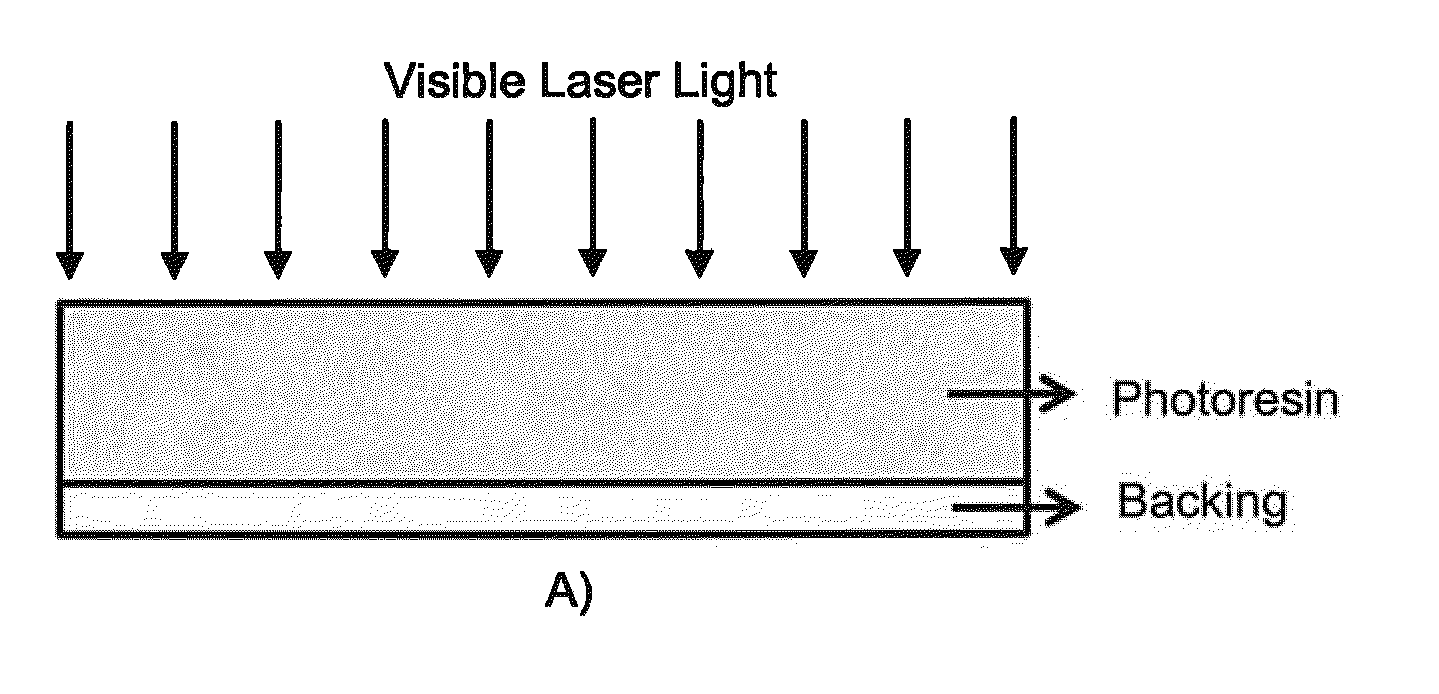Method of improving print performance in flexographic printing plates
a printing plate and relief image technology, applied in the field of relief image printing elements, can solve the problems of difficult to print small graphic elements such as fine dots, lines and even text, and easy damage to the press, and achieve the effect of good surface cur
- Summary
- Abstract
- Description
- Claims
- Application Information
AI Technical Summary
Benefits of technology
Problems solved by technology
Method used
Image
Examples
example
[0069]A direct write photoresin, comprising a crosslinkable elastomeric compound, a plasticizing compound, monomeric binder compounds, and a set of one or more photoinitiator compounds was utilized to demonstrate the advantages realized by the present invention.
[0070]The imaging process was conducted using a Lüscher Xpose! direct write laser at a power of 95 mW / cm2, a laser scanning speed of 550 rpm, with six scans made in a multi-pass imaging protocol with dot areas of 70%, 15%, and 1%, 1%, 1% and 1% on successive passes.
[0071]The imaging process was conducted using two different methods. In the first method, the imaging was conducted with the coversheet removed as a comparative example. In the second method, which is in accordance with the present invention, the imaging was conducted with the coversheet remaining on the photoresin during the imaging step.
[0072]The resulting dot geometries obtained from these two methods are very different as shown in FIGS. 3-5.
[0073]FIG. 3 depicts...
PUM
| Property | Measurement | Unit |
|---|---|---|
| wavelength | aaaaa | aaaaa |
| surface roughness | aaaaa | aaaaa |
| thickness | aaaaa | aaaaa |
Abstract
Description
Claims
Application Information
 Login to View More
Login to View More - R&D
- Intellectual Property
- Life Sciences
- Materials
- Tech Scout
- Unparalleled Data Quality
- Higher Quality Content
- 60% Fewer Hallucinations
Browse by: Latest US Patents, China's latest patents, Technical Efficacy Thesaurus, Application Domain, Technology Topic, Popular Technical Reports.
© 2025 PatSnap. All rights reserved.Legal|Privacy policy|Modern Slavery Act Transparency Statement|Sitemap|About US| Contact US: help@patsnap.com



